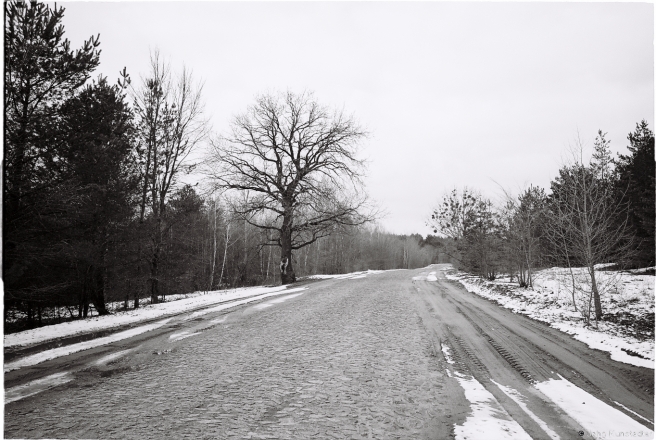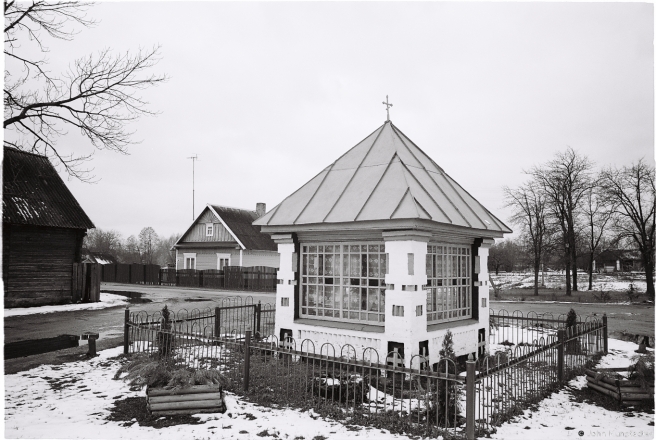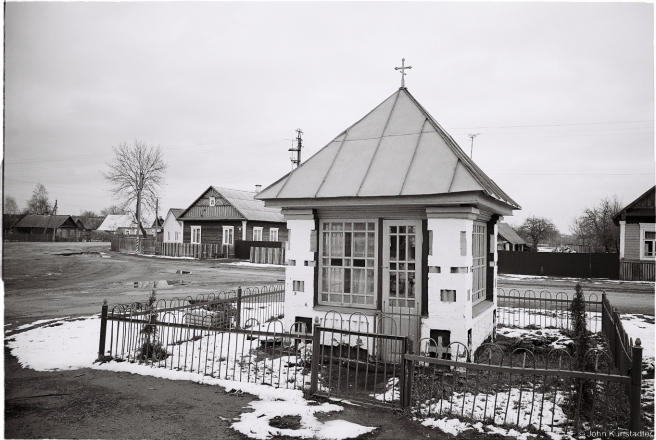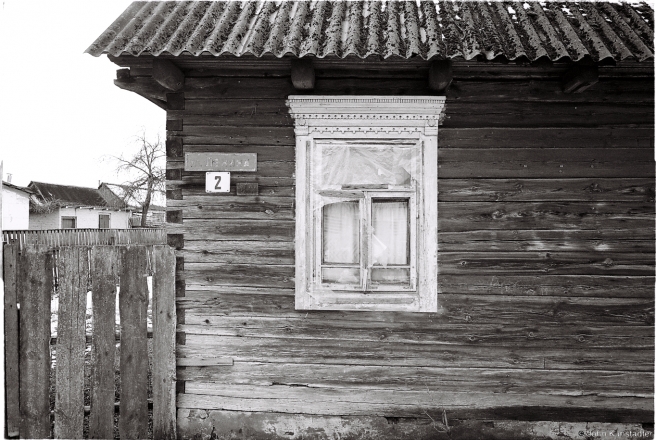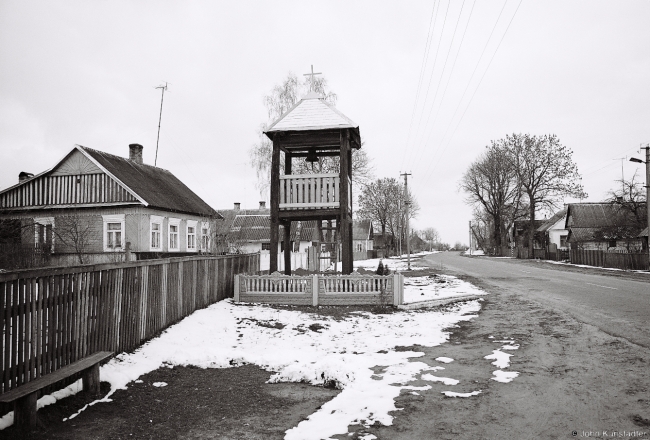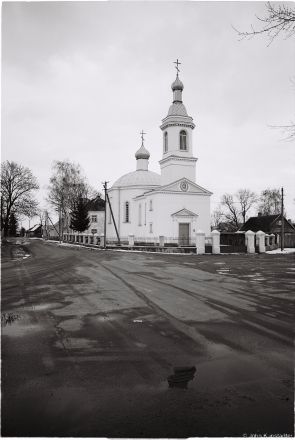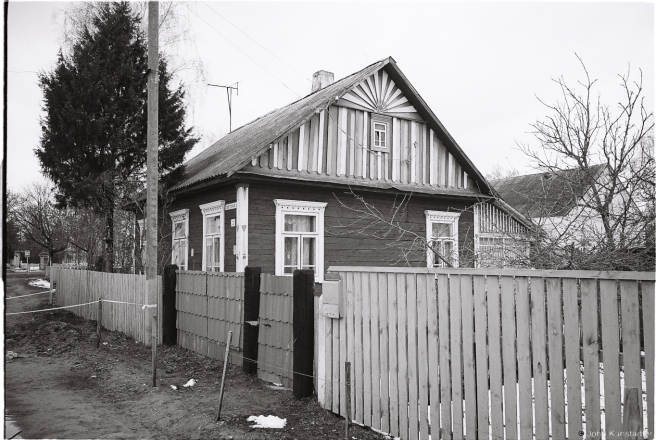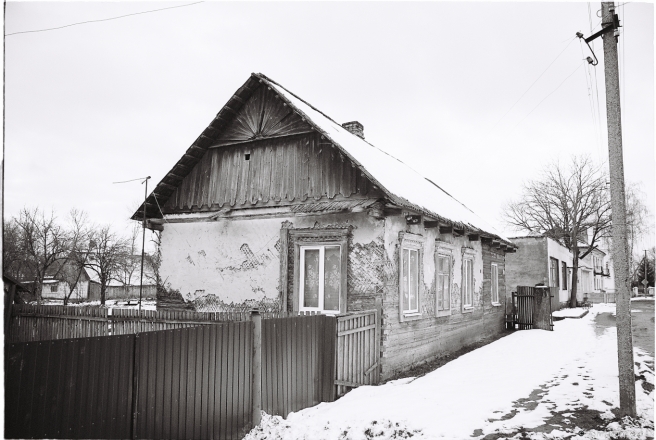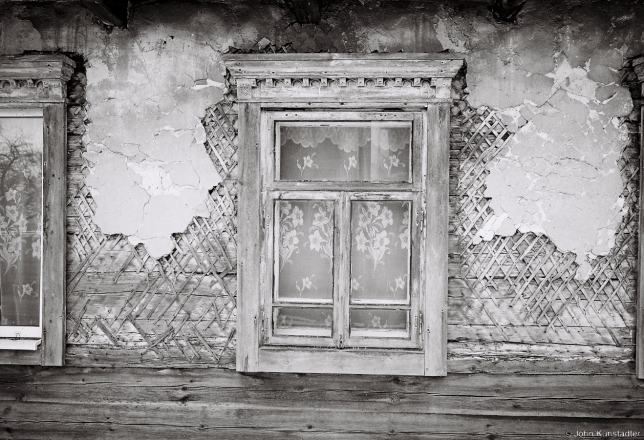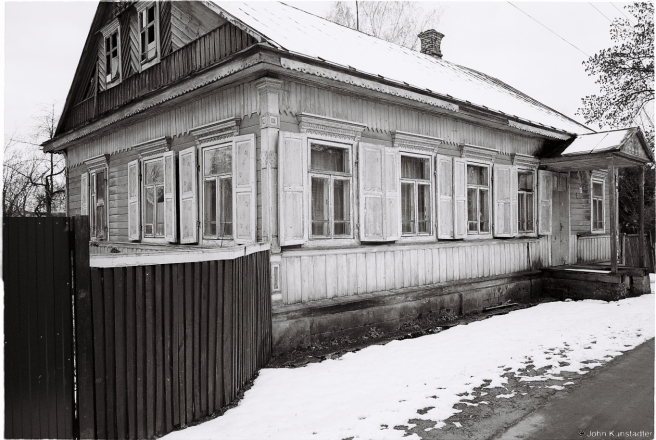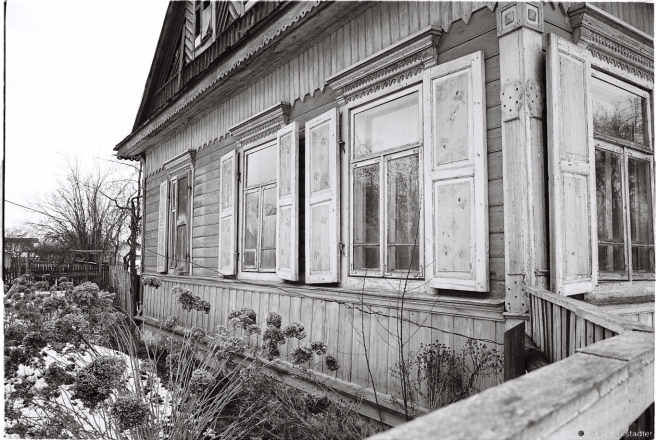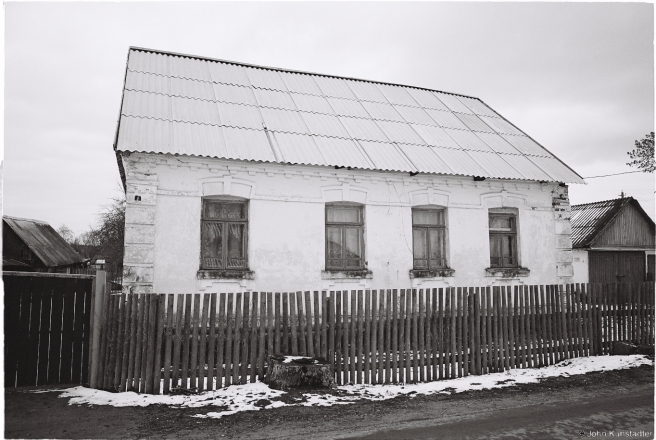Photographic expedition to Hantsavichy (Khatsinavichy) and Pinsk (Dabraslauka, Lyshcha, Zapol’lje, Pinsk, Pinkavichy, Kupjatsichy, Haradzishcha, Vylazy, Parakhonsk, Soshna, Kamjen’, Pahost-Zaharodski) Districts with Anton Astapovich, Chairman of the Belarusian Association for the Preservation of Cultural and Historical Monuments (БДТАПГК).
Part VIII/VIII: Vjaz, Kamjen’, Pahost-Zaharodski
Фотаэкспедыцыя з Антонам Астаповічам, старшыням Беларускага дабраахвотнага таварыства аховы помнікаў гісторыі й культуры (БДТАПГК) па Ганцавіцкім (Хацінавічы) і Пінскім (Дабраслаўка, Лышча, Запольле, Пінск, Пінкавічы, Купяцічы, Гарадзішча, Вылазы, Парахонск, Сошна, Камень, Пагост-Загародскі) раёнах.
Частка VIII/VIII: Вяз, Камень, Пагост-Загародскі
The old road from near Soshna to Kamjen’ contains a section of well-preserved Polish-era cobblestones ( brukavanka — брукаванка) near Vjaz, where I photographed this fine Polesian oak. Near Vjaz 2016.
Палескі дуб уздоўж добра ахоўванай брукаванкі ля в. Вяз 2016 г.
Polish-era roadside chapel, Kamjen’ 2016. Note as well the sun symbols on the houses flanking the crossroads.
Міжваенная прыдарожная капліца, Камень 2016 г. Гл. таксама сімвалы сонца на шчытах дамоў на фоне.
Window-frame decoration, Kamjen’ 2016. Ліштва, Камень 2016 г.
Village bell, Kamjen’ 2016. Вясковыя звон і званіца, Камень 2016 г.
Orthodox church of Saints Cyril and Methodius (erected 1779 as the Roman Catholic church of St. Joseph, then used as a Greek catholic church, then taken by the Moscow Patriarchate as an Orthodox church after the suppression of the uprising of 1863-64, returned to the Roman Catholic church by the Polish authorities after 1921, re-taken by the Moscow Patriarchate in 1945), Pahost-Zaharodski 2016. As reflected in the masonry church and sizeable houses (see below) Pahost-Zaharodski owed much of its prosperity to its renowned glazed black pottery, which flourished until the Soviets occupied the western Belarusian lands in 1939.
Царква Сьв. Кірылы й Мятода (пабудаваная ў 1779 г. як касьцёл Сьв. Юзафа, потым стала грэка-каталіцкім храмам, забраная Маскоўскім патрыярхатам пасьля паўстаньня 1863-64 гг., вярнутая рыма-каталікам польскай уладай пасьля 1921 г., зноў заьраная Маскоўскім патрыярхатам у 1945 г.
Pahost-Zaharodski has a fine patrimony of pre-World War II wooden and masonry homes. Note here the examples of sun symbols on the gables and the fine window-frame artistry in the third photo.
Росквіт Пагосту-Загародскага с 19-га ст. па 1939 г. звязваўся з развіцьцям яно выдатным ганчарствам. Следы гэтага росквіту бачныя ў спадчыне шматлікіх, салідных даваенных дамоў. Зьвяртаюць ўвагу і шчыты з сімвалам сонца і файнае рамёства ліштваў.
Pre-World War II Jewish home and store. Даваенная местачковая забудова.
A fine example of an arrow symbol (a vil’chyk), part of a tradition stretching back to pre-Christian times of using symbols on a house to ward off misfortune.
Выдатны прыклад вільчыку.
